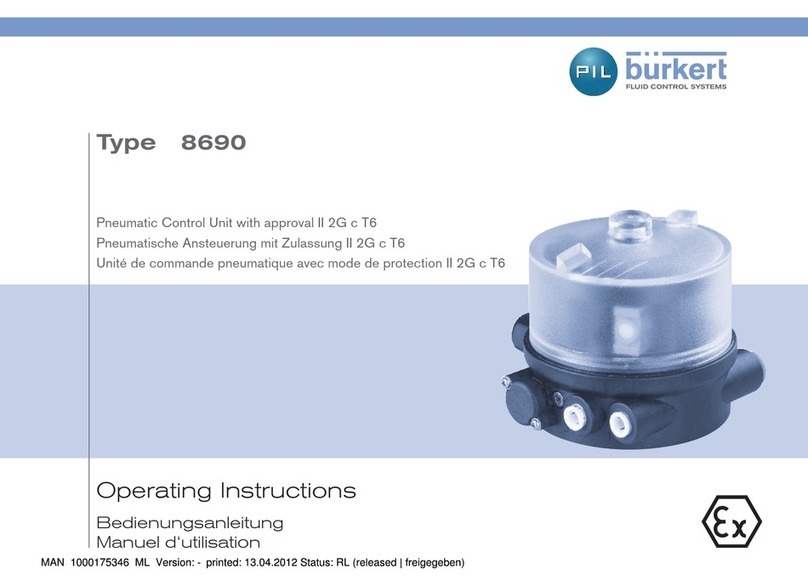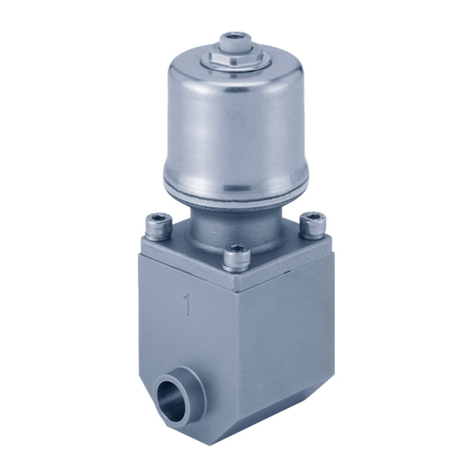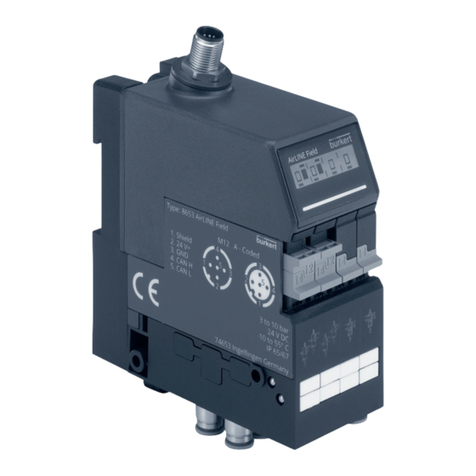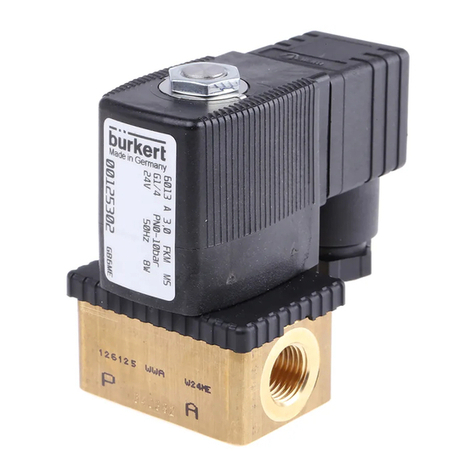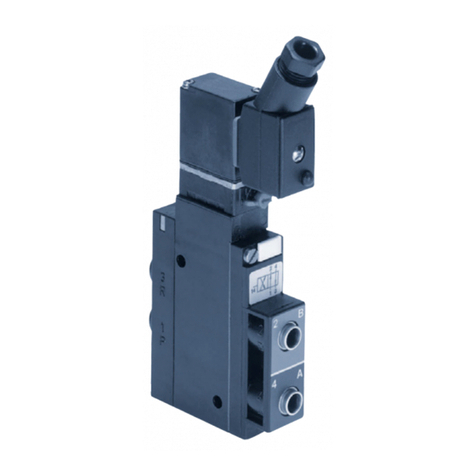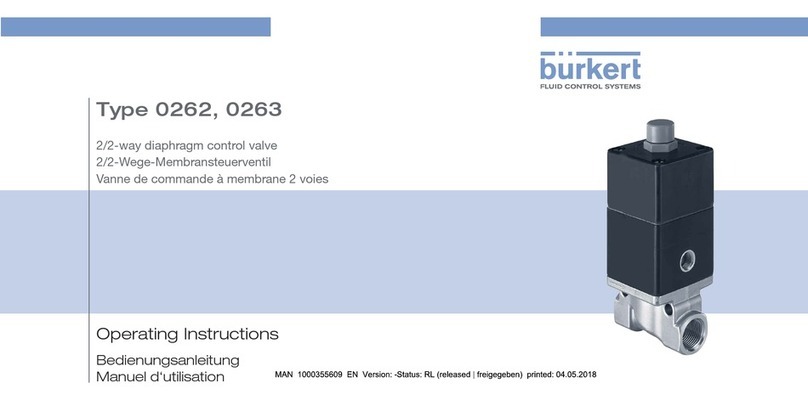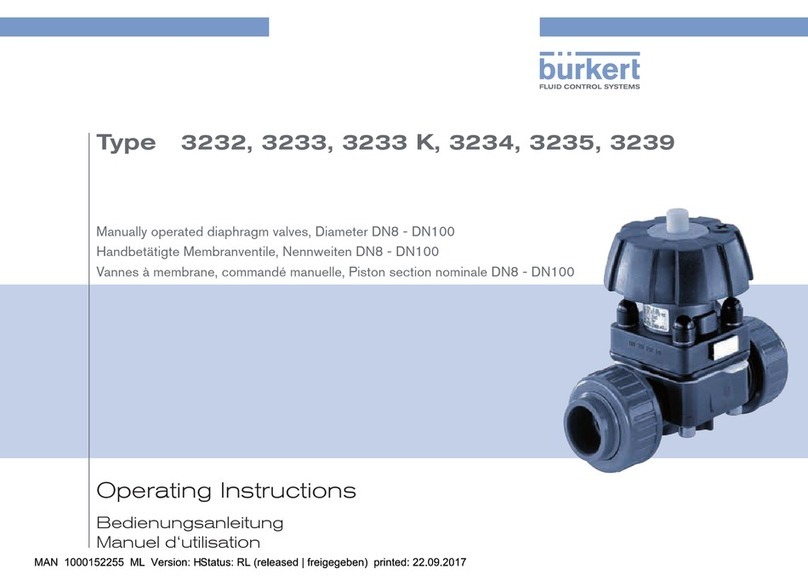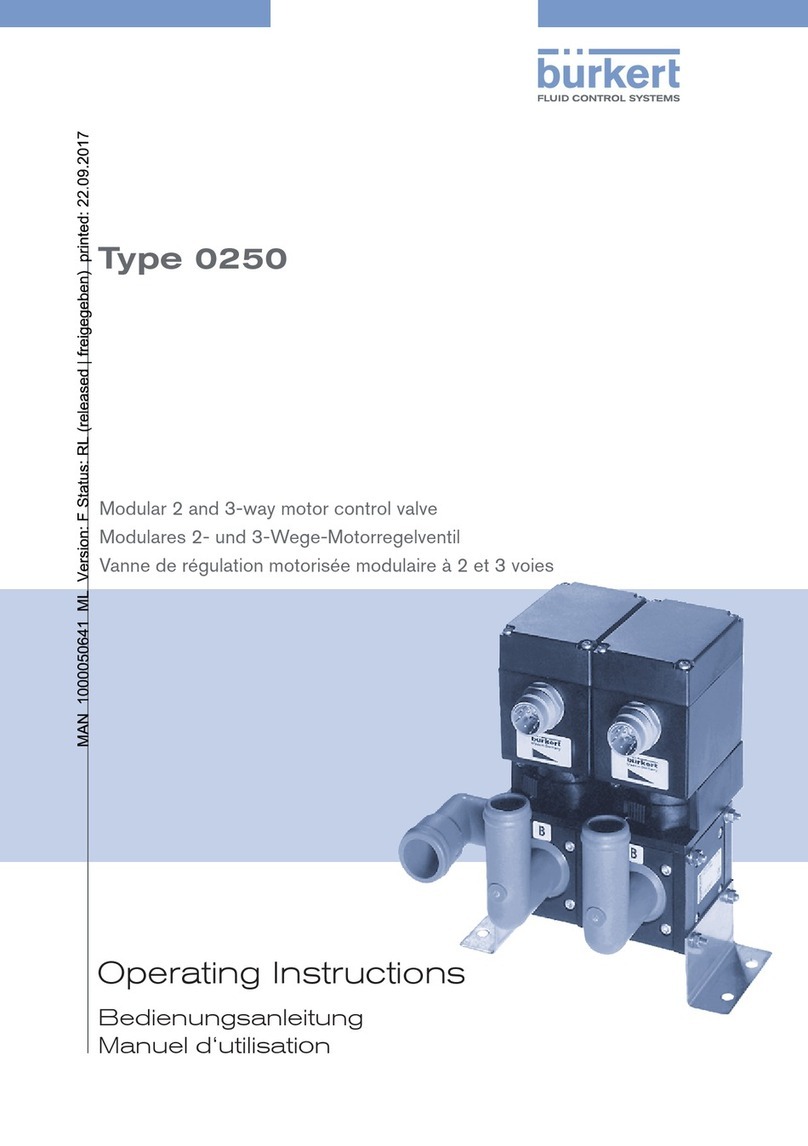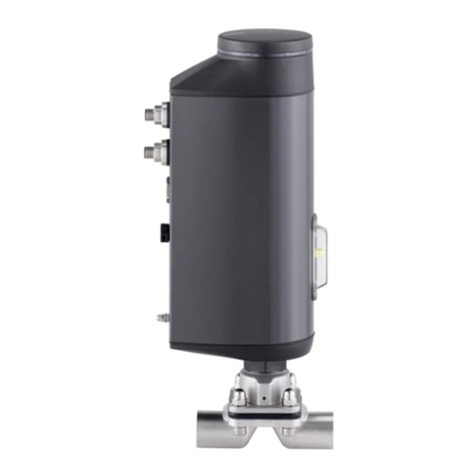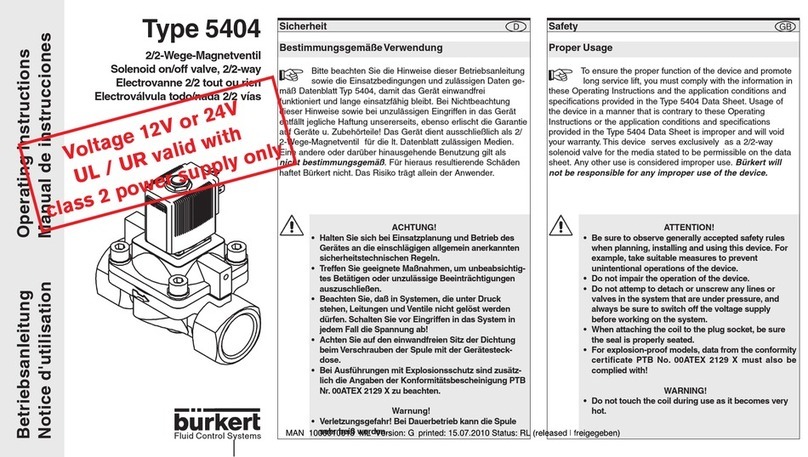
32
Process data 2 static input assemblies
(Input: from the control head to the
DeviceNet Master/Scanner)
1 static output assembly
Inputs 3 discrete feedback signals of the posi-
tion measuring system (pos. S1 - S3)
1 discrete feedback signal of the
external initiators (S4)
1 analog position signal in mm
Supply via DeviceNet string
(11 to 25 V DC)
Switch level high signal 5 V
Switch level low signal 1,5 V
Outputs 3 solenoid valves
Power consumption
from the bus: max. 5 W, (3 valves with each 0,8 W)
Length of the Bus line11.3.
The maximum total line length (sum of trunk lines and drop
lines) of a network depends on the baud rate.
The maximum total line length (according to DeviceNet
specification) is for:
english
33
Baud rate Thick Cable Thin Cable
125 500 m 100 m
250 250 m 100 m
500 100 m 100 m
The maximum drop line length is for:
Baud rate Drop Line Sum (in Network)
125 6 m 156 m
250 6 m 78 m
500 6 m 39 m
Electrical Data11.4.
Electrical power supply: 11 to 25 V DC (according to
specification)
Max. power consumption: 200 mA at 24 V DC
Input / proximity switches (external initiator: S4 in):
Power supply: via DeviceNet power
supply - 10 %
Current carrying capacity
sensor power supply: max. 30 mA
Short-circuit protection
Design: DC 2- and 3-conductor,
NO contact, PNP output
english
34
Input current 1 signal: ISensor > 6.5 mA, limited
internally to 10 mA
Input voltage 1 signal: USensor > 10 V
Input current 0 signal: ISensor < 4 mA
Input voltage 0 signal: Usensor< 5 V
Inputs (from master perspective) / binary or analog
feedback signals:
The recovery of the 3 valve positions reported back binarily
or of the analog position signalis described in the manual,
chapter “Position Mesuring System”.
Outputs (from master perspective) / solenoid valves:
max. switching capacity 1.0 W
typ. continuous output 0.8 W
Output reduction integrated via DeviceNet
interface electronics
pull-in current 120 mA typ. / 200 ms
(3 valves)
Holding current 100 mA typ. at 24 V DC
(3 valves)
Operating mode Long-term operation
(100 % operation)
Valve types 6524
Central display of the switching states:
Power consumption from
DeviceNet at 24 V DC 42 mA with 24 V DC power
english
35
supply per illuminated display
shown; Color switching see
in the manual, chapter “LED -
Color Assignments”
Electrical Installation (DVN)11.5.
WARNING!
Risk of injury due to electrical shock!
Before reaching into the system (except for the• Teach-In procedure in a non-explosive atmosphere)
switch off the power supply and secure it to prevent
restarting!
Observe applicable accident prevention and safety• regulations for electrical equipment!
Risk of injury from improper installation!
Installation may be carried out by authorized techni-• cians only and with the appropriate tools!
No internal cabling work is required for any of the Devi-
ceNet designs.
However, you will require the correspondingly assembled
cable sets with the pin assignments described below:
english
